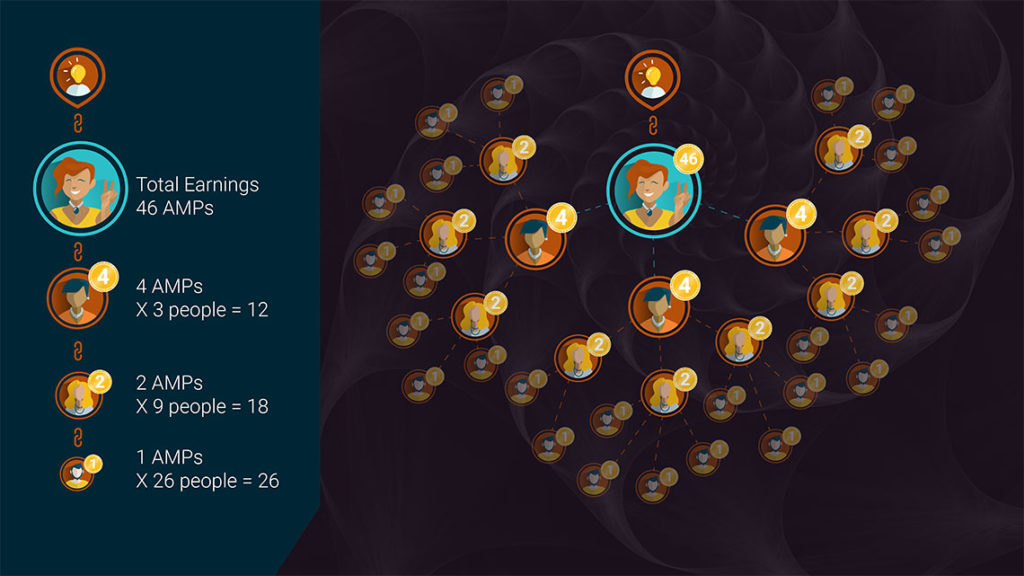
Online publishing and advertising is a very profitable market. Yet not everyone is profiting equally from it. Content hosting services, social media giants and advertising intermediaries are raking in huge sums of the revenue. Meanwhile the users who create, curate and share the content take away little or nothing from the value they help create, effectively becoming cogs in the wheel of tech giants.
Hopefully, blockchain, the technology that powers digital currencies, provides an alternative to the centralized ad and content delivery model. Blockchain, which rose to fame with the advent of Bitcoin, is a distributed ledger controlled by no single gatekeeper. It provides a platform to perform secure transactions without the need for brokers and middlemen. In recent years, blockchain has expanded its reach from monetary exchange to other fields where parties want to trade assets of value.
In the online content and digital advertising industry, blockchain can help level the playing field and create platforms where everyone gets compensated fairly for their contribution to the economy.
Blockchain-based digital advertising

Over the years, digital advertising has transformed into an inefficient marketplace that’s causing a lot of harm. Advertisers pay huge sums to intermediaries to reach their audience while publishers get meager portions of the ad revenue. And users’ share of the economy is annoying ads, slower page loads and tons of privacy-invading tracking code.
Blockchain creates an entirely new way to serve ads and reward publishers without the need for opaque intermediaries. One of the most notable projects in this regard is Brave, a browser developed by the namesake company cofounded by Brendan Eich, the inventor of JavaScript and cofounder the Mozilla project.
Brave natively blocks ads and trackers when you browse the web. In exchange users can opt-in to turn on ads, in which case both viewer and publisher get awarded Basic Attention Tokens (BATs), the company’s proprietary digital currency which exists on top of the Ethereum blockchain. Users can also choose to send BATs to the creators of their favorite content. Brave comes integrated with a BAT wallet. The browser uses local algorithms to assess user attention and optimize ads while preventing fraud and avoiding privacy invasions.
The system uses anonymization methods to protect user identities while providing advertisers with a verifiable audit trail on the blockchain. The main hurdle for Brave’s method of advertising and monetizing content is to get publishers and advertisers to adopt the model.
Rewarding content creators and curators

Everyday, the internet generates millions of dollars worth of curated, shared and consumed content. However, centralized content hosting and distribution platforms reap most of the rewards. The people who are distributing the content have no say over how the dividends are distributed.
This is something that blockchain and a decentralized attention economy can change. Blockchain startup Synereo is aiming to remedy this situation with WildSpark, a new application it launched on August 10, which empowers consumers and curators directly to support content creators and be rewarded for their efforts as well.
WildSpark, which installs as a browser plugin, lets you send AMPs, Synereo’s cryptocurrency, to directly reward content creators when consuming their content—say a YouTube video. Afterwards, WildSpark generates a unique link that you can use to share the supported content with your followers on social media or embed it in your own blog or website, or send it through email
If other users view the content through your shared link and they too decide to send AMPs to the content creator, you will receive a percentage of the reward as the curator of the content. Every transaction is stored on the blockchain, which provides full transparency into the revenue that is channeled to each creator and curator.
The concept can enable users who have put hard efforts into creating large social media and and web followings to reward the creators of their favorite content and monetize their own platforms.
Supported by the blockchain, the decentralized attention economy makes sure everyone gets rewarded for their efforts in providing quality content.
Monetizing content and communities fairly

Popular social media platforms enable users to create groups and communities that focus on a single subject or domain. These groups provide a lot of value and rich information, which hosting companies use to serve ads and monetize their platform. But the people who run the operations and create the content in those groups and communities have no share or control over the rewards.
Blockchain can help create communities and focus groups where the creators of content set the rules, not the service gatekeepers. An example is Matchpool, a decentralized matchmaking protocol which can create paid-membership communities and premium content delivery on the blockchain
In Matchpool, users create “pools” (think of them as the blockchain version of Facebook groups) to bring together like-minded people. Pool creators can choose from different monetization models such as entrance or subscription fees, or per-content transactions. The platform runs on Guppy (GUP) tokens, which users can directly buy from Matchpool or trade on the platform.
As the protocol runs on blockchain, it performs all transactions in a transparent, peer-to-peer fashion. It involves no intermediary intervention or additional service fees. Pool creators and content owners get directly paid for their services and efforts. An added benefit is that the platform doesn’t collect user information, which is a plus for privacy.
Blockchain-based technologies can help democratize the web. The technology is still in its infancy when compared to other infrastructural technologies that support the web. But it is already showing promise to make the web more fair and profitable to everyone.
Get the TNW newsletter
Get the most important tech news in your inbox each week.





